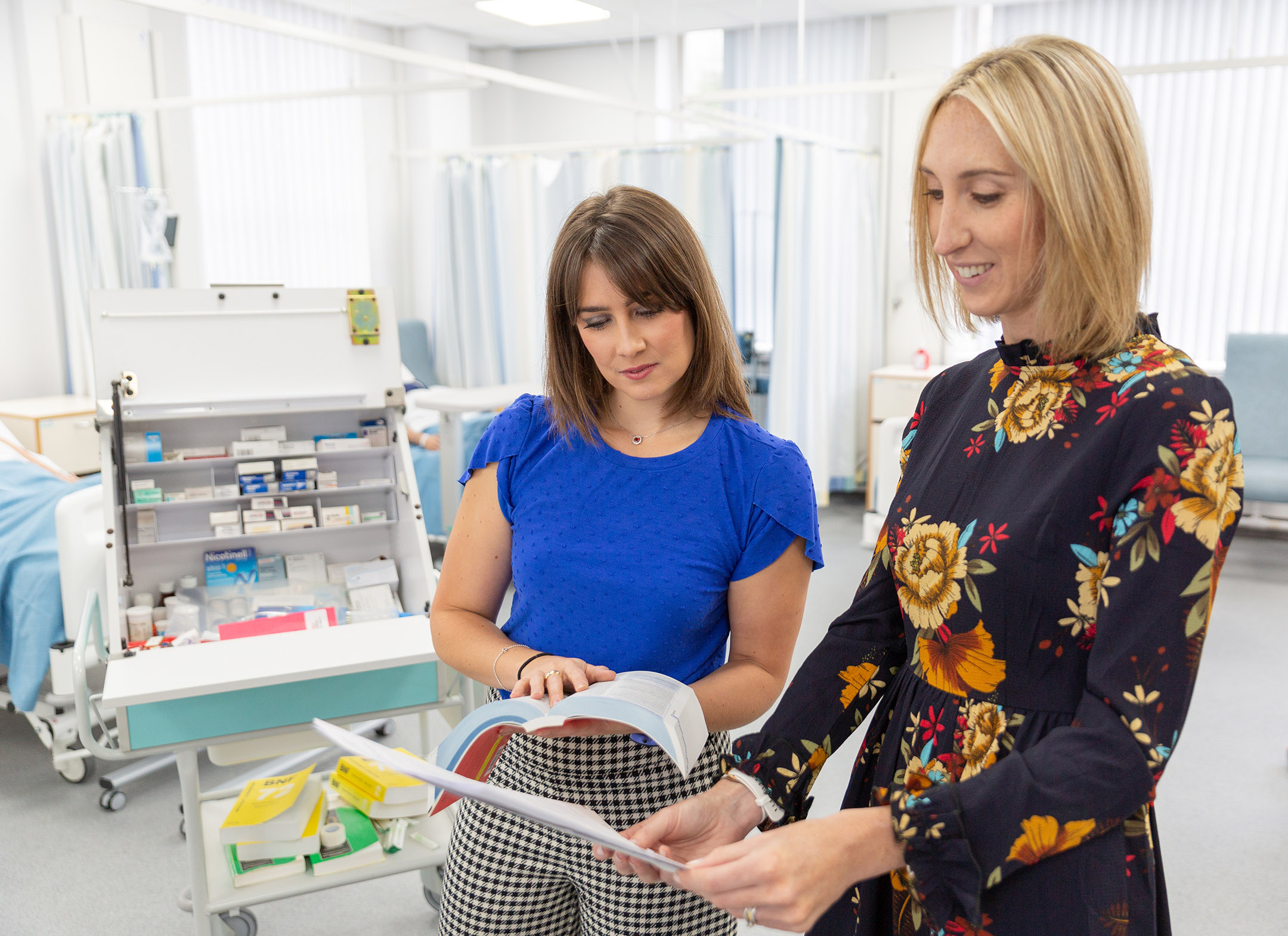Adult Nursing: Holly's Experience of the Course So Far
Holly chats to us about the first year of the course and her placement experience.

Why Did You Choose to Study at the University of Chester?
I chose to study adult nursing at this University because I liked the course content. I really like that the University provides 50/50 theory and practical work, because my priority was to have enough lecture time alongside placements so I could put my learning into practice.
I also did a foundation year which was massively helpful. The course content was relevant to my first year, so it was like I was revising content instead of starting everything anew. On top of this, completing a foundation year helped me to familiarise myself with the area; I was able to try new restaurants and make new friends. Having this time to adjust built my confidence for my first year.
What Support Did You Receive While Studying?
I received a lot of support from my lecturers. I like that I can communicate easily with my lecturers, ask them questions or bring up concerns; they respond in a timely manner and are very reassuring. Every Student is assigned a Personal Academic Tutor (PAT). I especially feel reassured by my PAT, and I feel comfortable talking to them because I know they will give me the support I need.
Tell Us About Your Creative Health Placement.
As a nursing student at the University of Chester, it is a requirement to complete the Creative Health placement.
At first, I was apprehensive because I had no idea what to expect. I always thought of nursing from a medical perspective like handovers, handling medication and remembering all the medical terms.
For my cohort, creative health was a four-week placement. Each week, my cohort worked with two charity organisations, Design in Mind, and Making Maestros, with additional time designated for the self-directed study of social prescribing in our local area, and for learning about creative health in a health care setting like a nursing home.
Making Maestros is a choir organisation, led by Jen O’Hare. We worked with her for our performance at St Mary’s Church and Mount House Nursing Home. With Jen’s leadership and guidance, my cohort was able to perform two songs and learn Makaton (signed communication)!
Design in Mind helps adults with mental health problems to express their feelings through art. We worked with staff member, Emma, who taught us various art techniques, such as embroidery and paper cutting from different cultures.
I really enjoyed my placement! Starting off with creative health built my confidence in teamwork, independent research and getting out of my comfort zone. By working with charity organisations, I felt the effects of social prescribing.
At the end of each session, I felt happier, less worried and more relaxed because I was enjoying myself with my friends and talking to other students in my cohort who I hadn’t yet spoken to.
What Was Your Main Takeaway from the Creative Health Placement?
The purpose of this placement is to bring awareness to student nurses that nursing is not just medical. The NHS says that one in five GP appointments are for non-medical reasons like loneliness. This reinforces the idea that people need more than prescriptions to feel supported.
The creative health approach encourages nurses to treat patients holistically and all healthcare providers to bring more creativity to their care, such as knitting with a patient or doing arts and crafts. Understanding that patients are still people.
After talking to people in the community who attend social prescribing activities, I have learnt that people who attended felt a noticeable change in their mood. They felt that when they focus on making art, even though they are dealing with health problems and other issues, they feel they have time to solely focus on their creation and forget about their troubles for a while, which helped them feel more motivated to tackle other problems in their lives.
Tell Us About Your Spoke Placement.
For my spoke placement, I spent one day a week at a health care setting to find out how creative health is used in that specific setting. I learnt about how creative health is used in a palliative care setting, and how creativity is used in the hospice to make memories for patients' families. During my time at the hospice, one of the most popular items asked to be made were fingerprint lockets; the patient’s fingerprint in a glass locket with a charm added.
Being able to make memories and see how families were touched, and being a part of something bigger than myself made me feel like I had made a positive change in their lives. It reminded me of my love for nursing and this was the highlight of my placement.
How Are You Supported During Your Placements?
For each placement, each student is assigned an academic assessor, a practice education facilitator, a practice assessor, and a practice supervisor. For my placements, the academic assessor and practice supervisor are lecturers I am familiar with, so I know I can contact them via email if I have any concerns or problems I need to address. This is another aspect of the University experience that I appreciate; the level of support I receive as a student is unmatched and I feel safer when I am on my placements because I know who to contact when needed.
Would You Recommend the Course and Why?
I would definitely recommend this course to prospective students. The creative health placement is unique to this nursing course, and it is an exciting opportunity to learn more about the future of social prescribing and how it will change health care professionals’ outlook on holistic non-medical care.